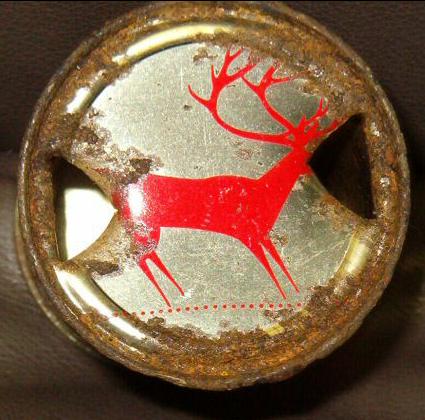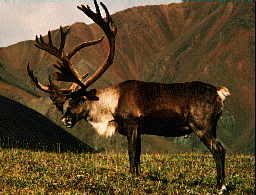Rainier "Reindeer Can": circa 1957
 |
 |
Rainier Beer, brewed at plants in both Seattle and Spokane was sold in the Pacific Northwest. Alaska was one of its biggest markets. Apparently among the Inuit the beer picked up the nickname "Reindeer Beer" as a play on the pronunciation of the word "Rainier." So in 1956-1957 Rainier decided to play along and use the nickname as a marketing gimmick. Instead of the usual red "R" on the top of the can, they put a red reindeer and they shipped the cans to Alaska only, selling them for a limited time in 1956 and early 1957. Because of their limited distribution they are quite scarce. I was pleased to grab this one off Ebay in November. (Thanks for the heads-up Bob!)
Rainier Brewing: 1933-1977
Rainier Brewing went through several different name changes during its lifetime. It had been founded as Seattle Brewing and Malting Company but when Washington State started statewide Prohibition in 1916, it moved its facilities to San Francisco and continued brewing Rainier Beer. When national prohibition ended in 1933 Emil Sick opened Sick's Century Brewing Company at the site of the old Seattle Brewing Company (see picture below). Sick bought numerous breweries in the 1930s, and purchased the right to use the old Rainier beer name from the Rainier Company in San Francisco. In 1952 the Sick's Rainier Brewing Company prepared to celebrate its 75th anniversary by issuing a special set of colorful cans. The result was the rainier Jubilee set , which is by far the largest of all the 1950s can sets. Issued between 1952 and 1964 there are four sets and one individual can. The Reindeer can is part of the "brewery " series, the last to be issued. For more details see my Rainier Jubilee Page. The last cans were also issued in a zip top, but these are fairly scarce, far more so than the flattop version. Rainier Brewing held on until 1977 when it was sold to G. Heilman Brewing.
The Sick's Seattle Brewing and Malting Company, circa 1939.
Is a Reindeer the Same as a Caribou?
YES. Rangifer tarandus
From the Bering Land Bridge National Preserve web site.
Although they are called by different names in North America, wild caribou and domestic reindeer are considered to be a single species throughout the world.
Caribou are rather large members of the deer family. Their broad, concave hoofs spread to aid walking on soft ground and are good for digging in snow. Both sexes grow antlers that in males serve as sexual ornaments and weapons for fighting rivals during the breeding season. Alaskan caribou are clove-brown with a white neck and rump. Chukotkan reindeer, as a result of domestication, have varied pelt combinations of brown, gray, black and white in the same herd.
 |
Where's the CARIBOU can??
UPDATE: May 2005
A collector dumping in Alaska recently found some more Reindeer Jubilee cans. They made up only a small part of the Rainier Jubilees in the dump, but he did find some!
Sources Used:
Beer Can Collectors of America. Catalog of American Beer Cans. (1993) 665.
Garard, Michael. "The Reindeer Can--It's Nothing to Laugh At" Beer Can Collectors News Report. January-February 1980 (10:1) 11.
Jeziorski, Dan. "Jolly Jubilees" Beer Cans and Brewery Collectibles. December-January 1998. (27:6) 4-5.
Mugrage, 'Premium' Bill. "Rainier Jubilee: The Ultimate in Series Cans" Beer Can Collectors News Report. July-August 1980 (10:4) 8-9.
O'Dell, Bill. "Rainier Jubilees" Beer Can Collectors News Report. January 1976 (6:1) 4-5.
Pirie, Bob. "The Story Behind the Scenic View Gettleman Beer Can Series" Beer Cans and Brewery Collectibles. April-May 2001. (31:2) 22-27.
"Some Local Breweries That Make It Go!" Brewers Digest. (September 1939) 24-37.
Van Wieren, Dale P. American Breweries II (West Point, PA.: East Coast Breweriana Association, 1995) 382-383.

